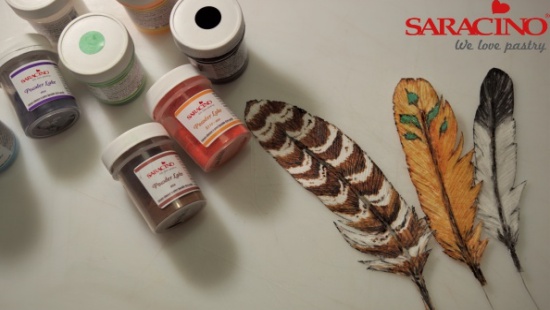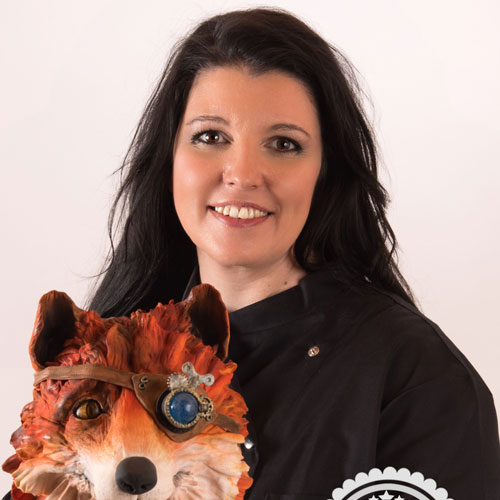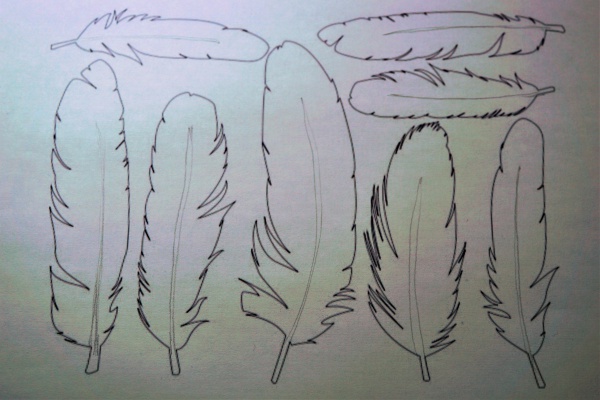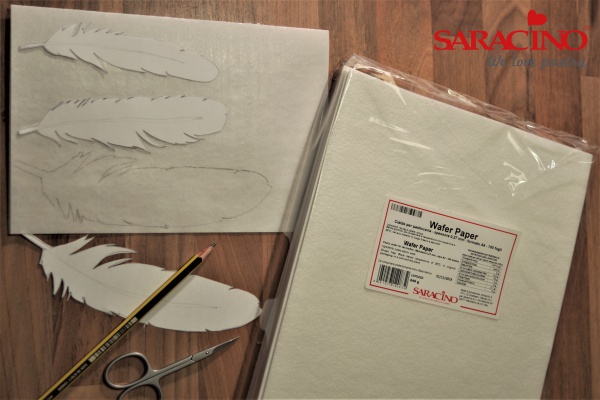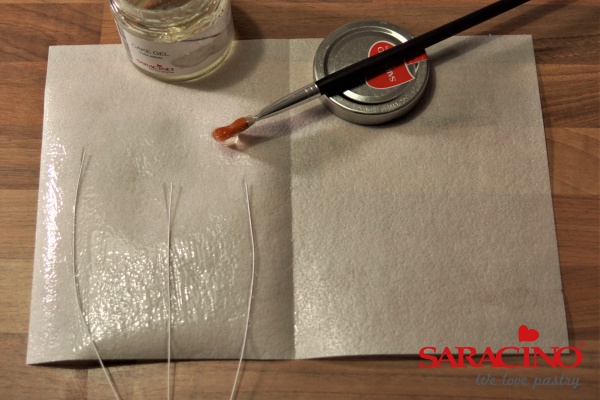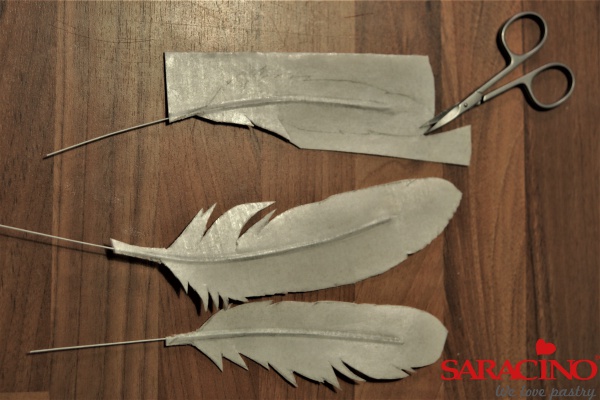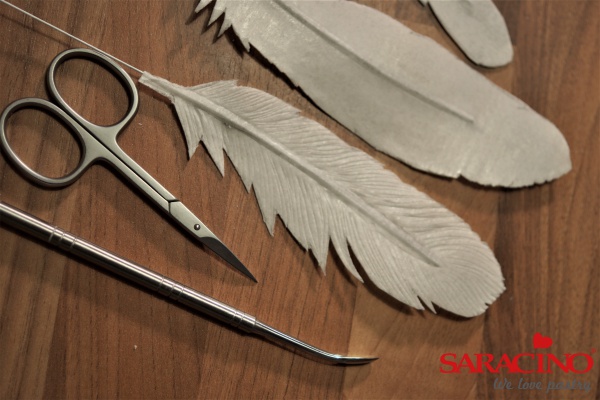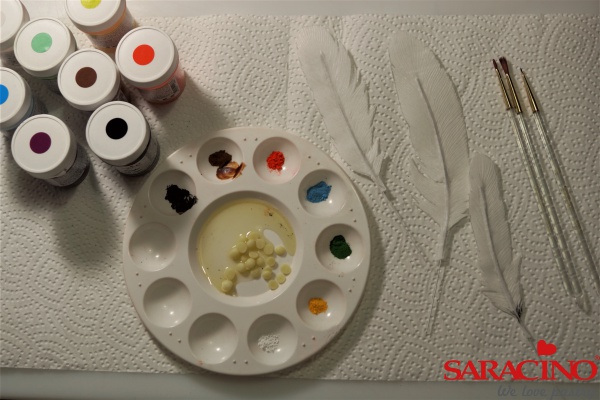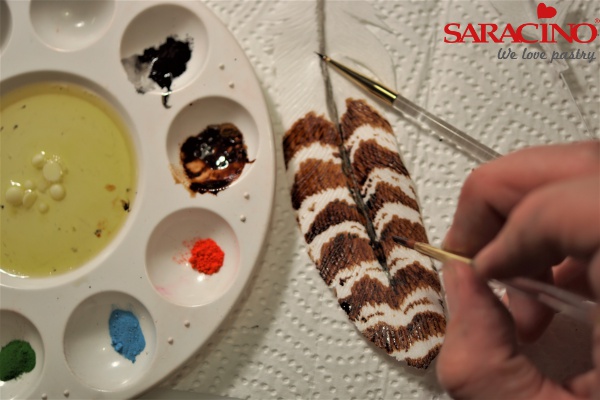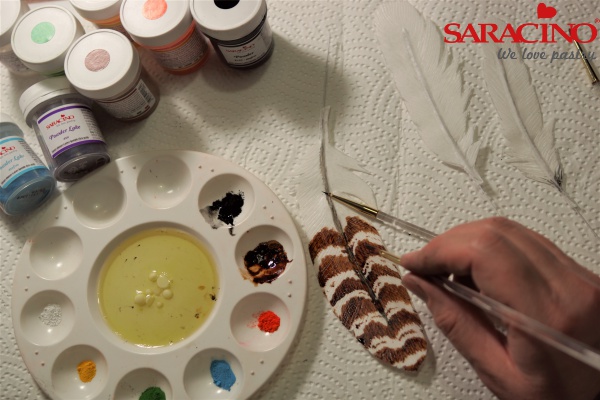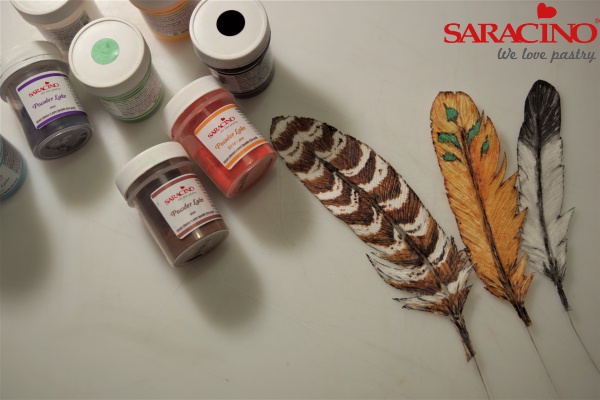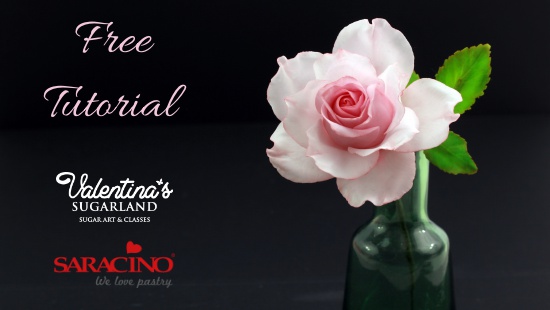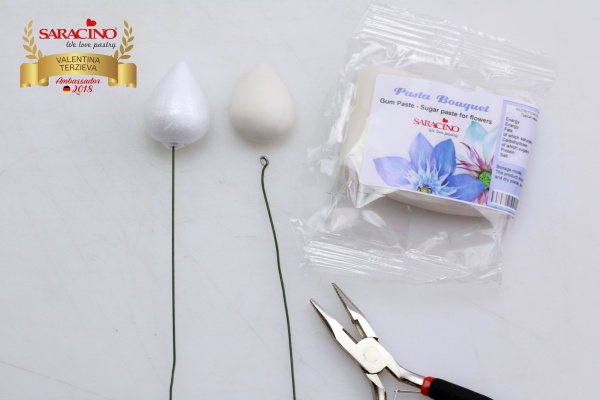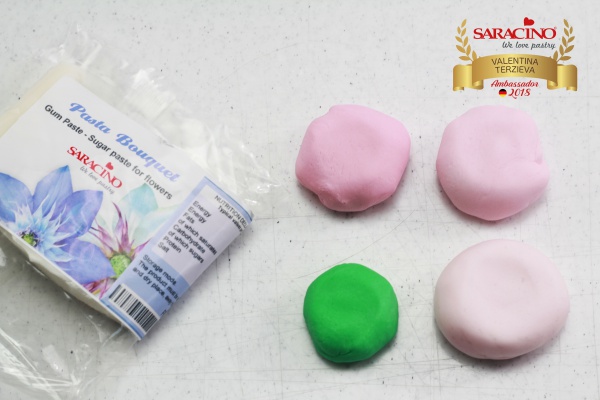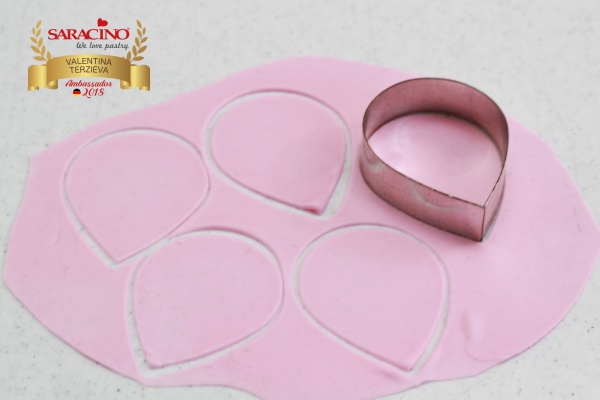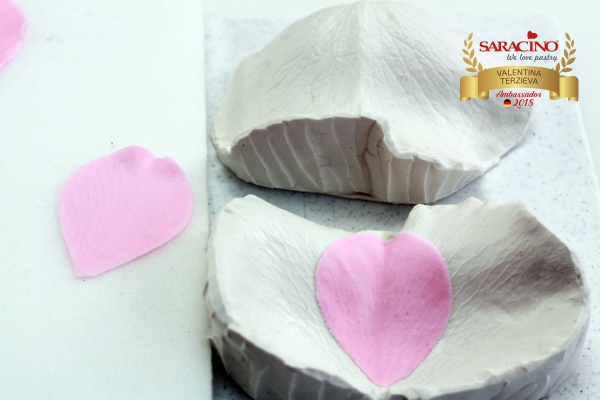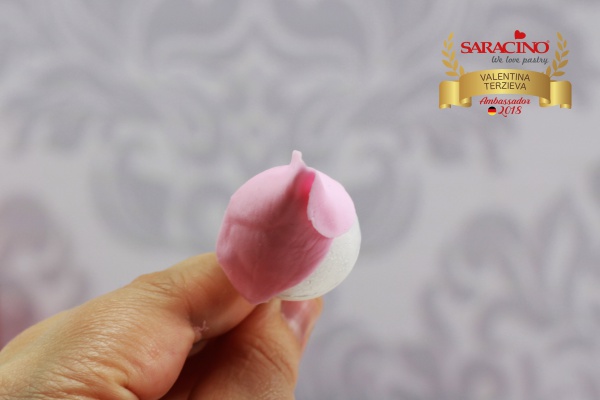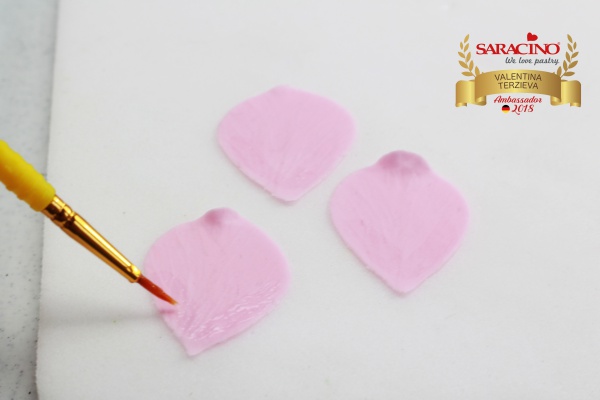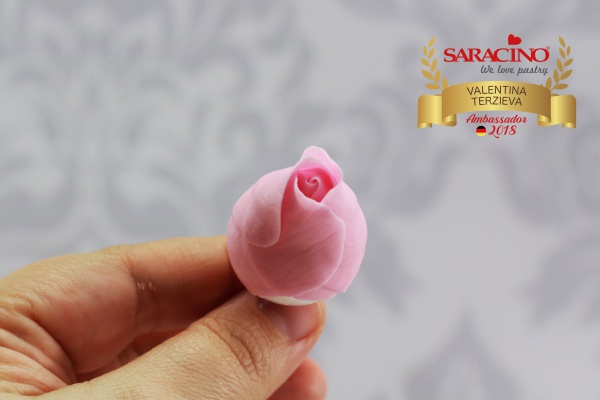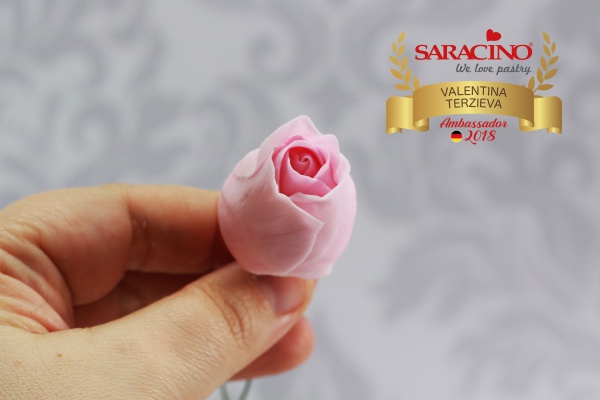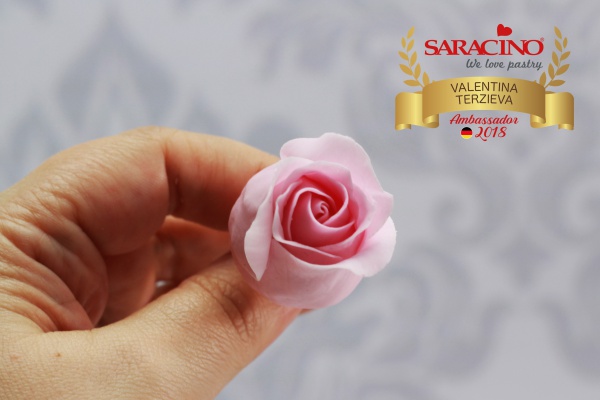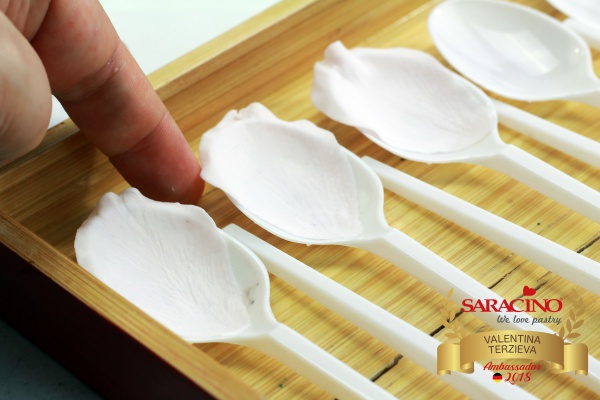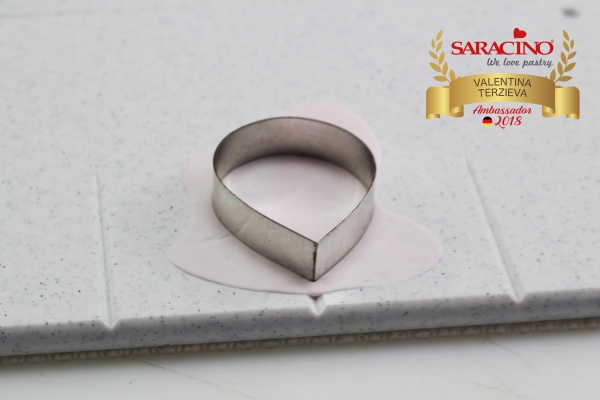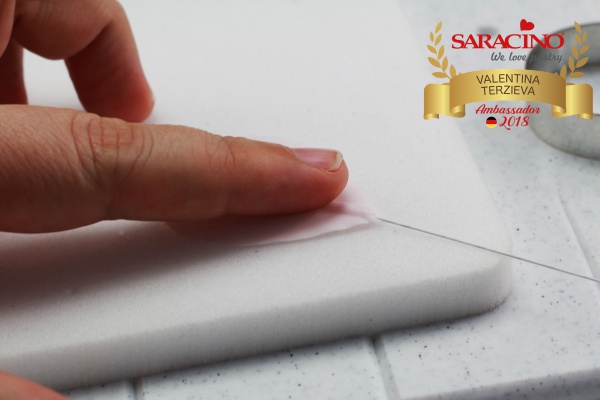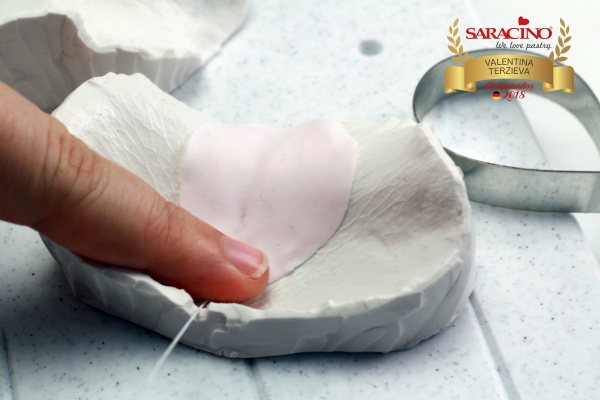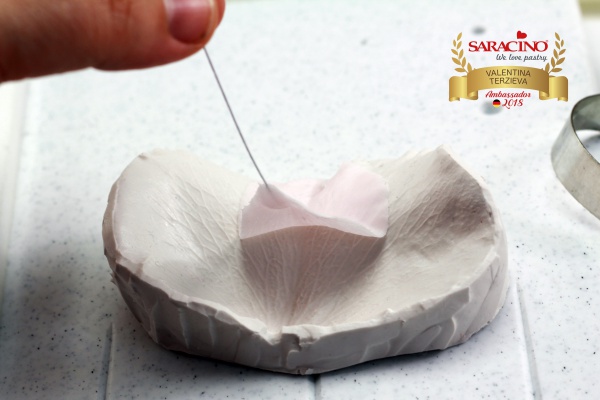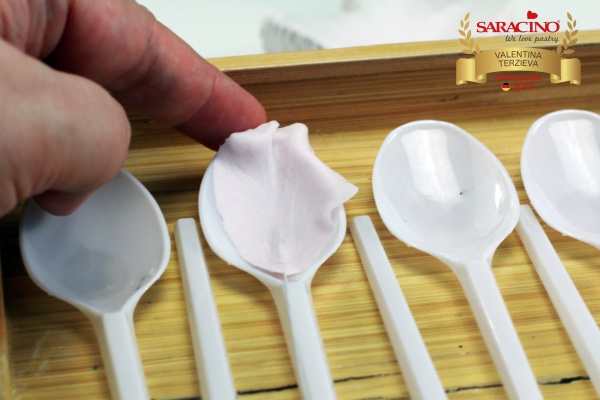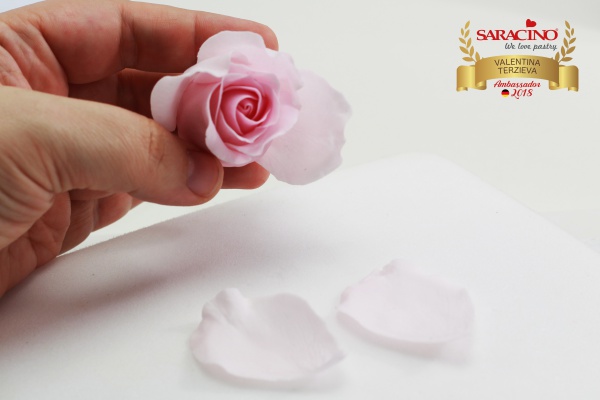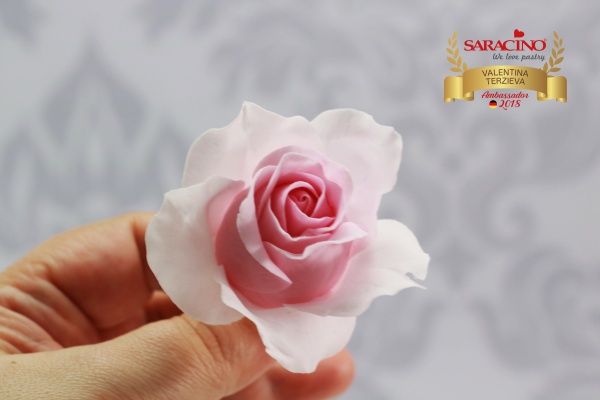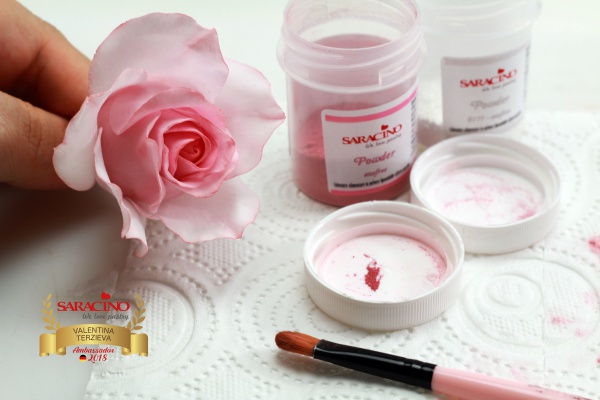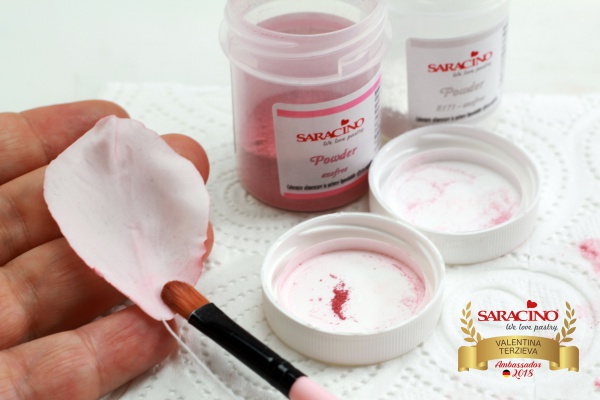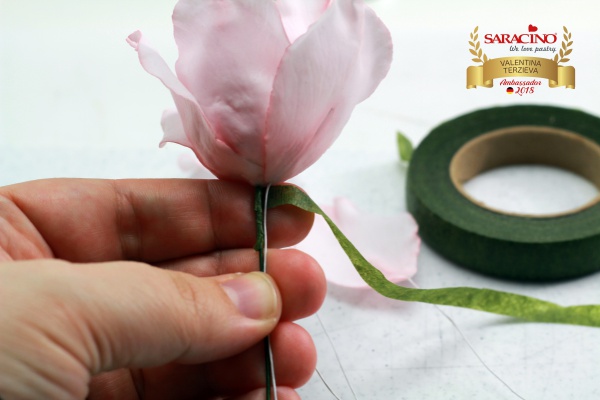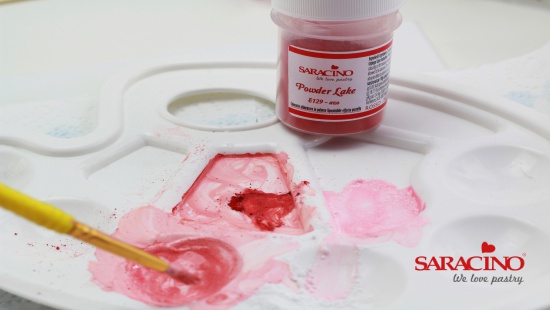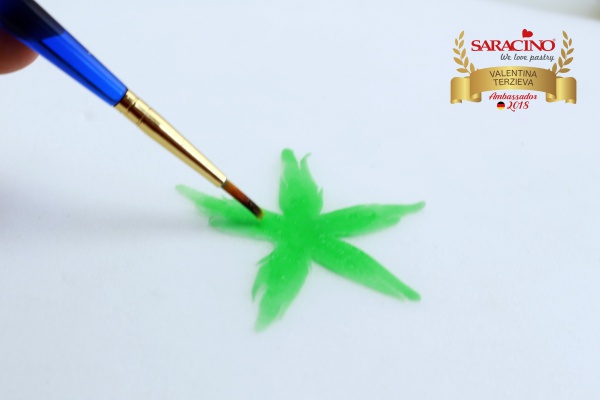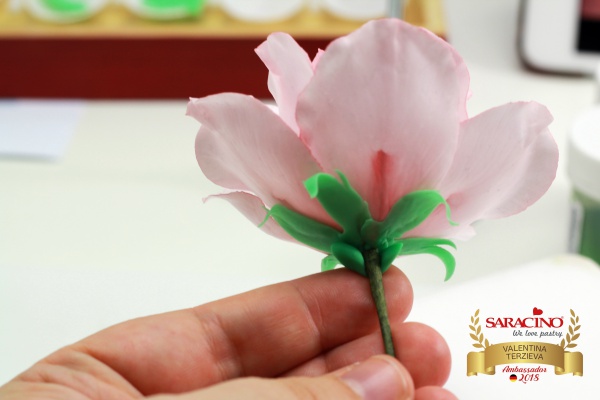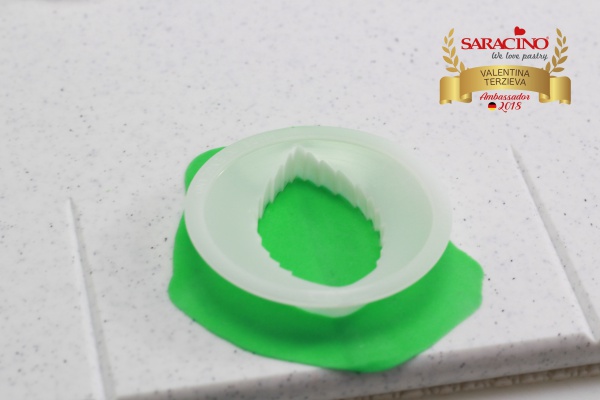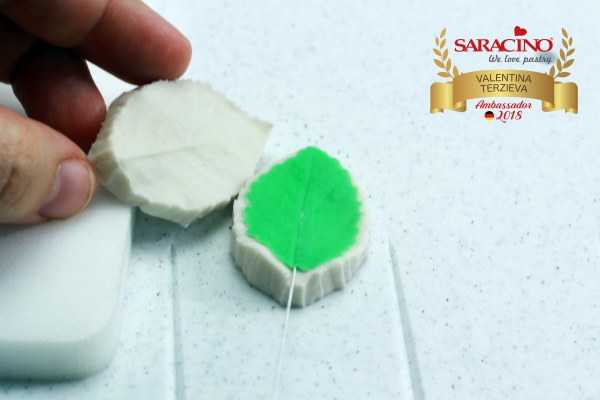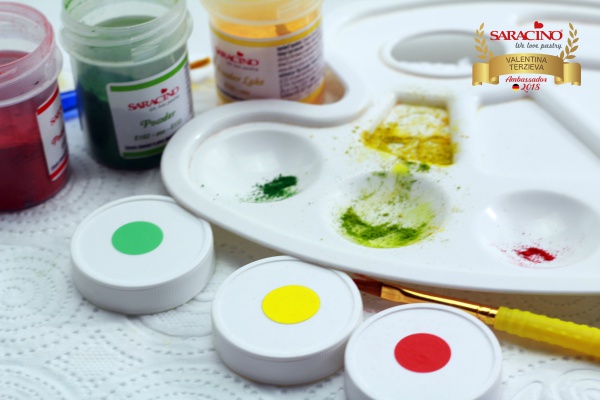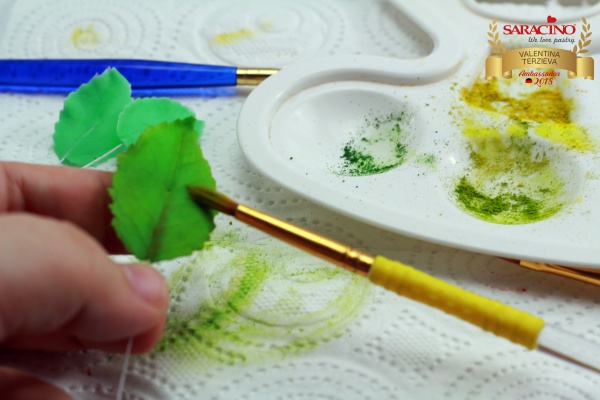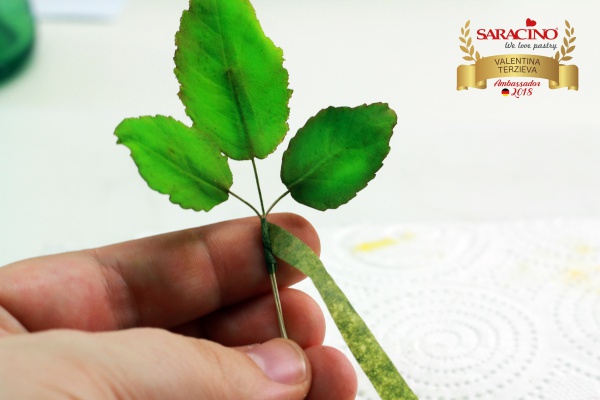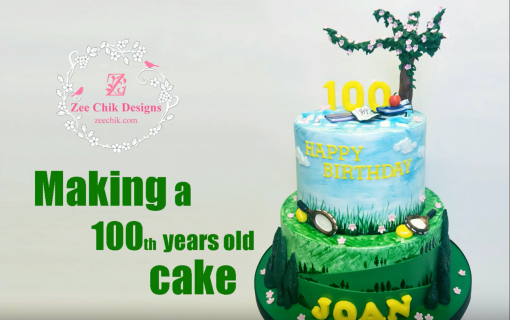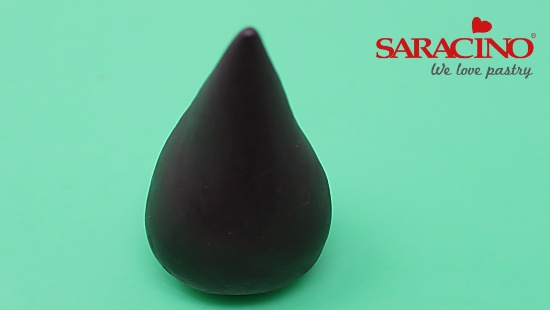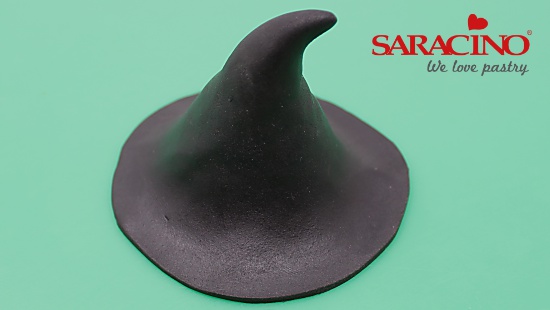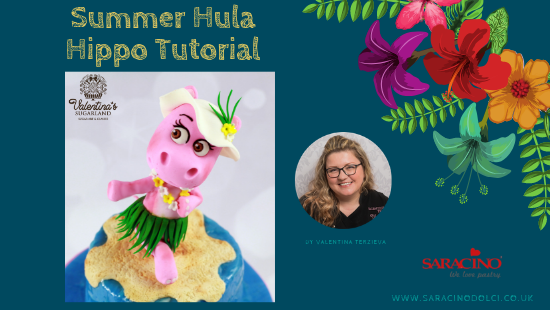
SUMMER HULA HIPPO
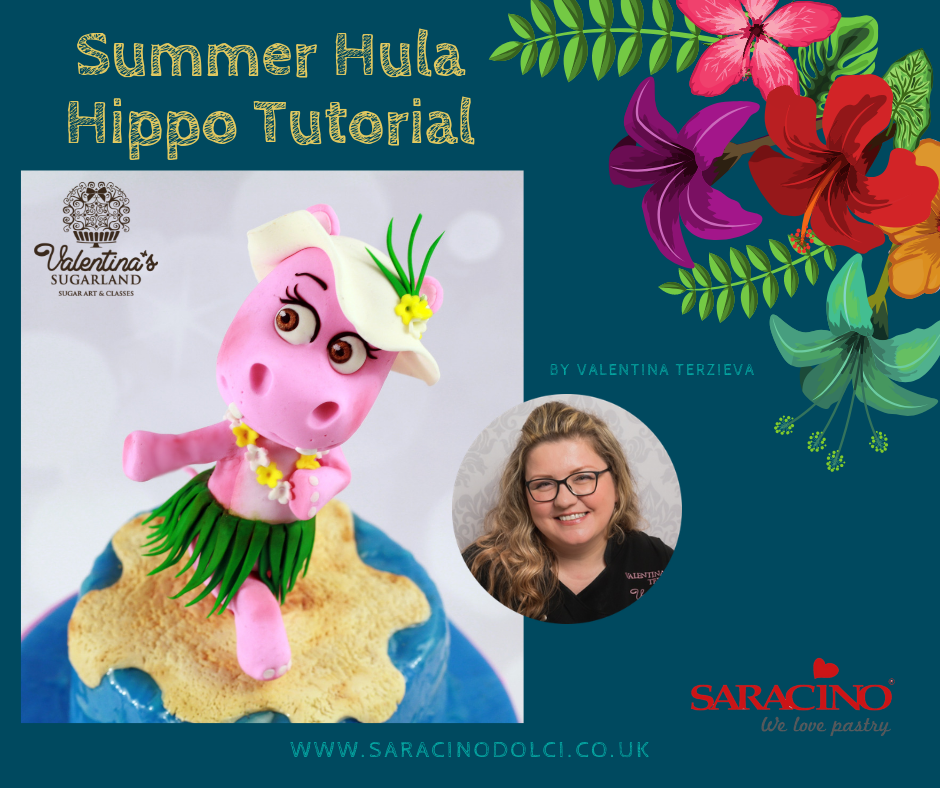
You will need:
- Saracino Modelling Paste – 50g fuchsia, 100g white, 20g green, 10g brown, 10g black and 10g yellow
- Saracino Dust Colours – pink, brown, green, bronze and white
- Saracino Cake Gel
- Cake Dummy
- Modelling Tools and brushes
- Knife
- Round cutter 3cm and 5.5cm
- Wooden skewer/Barbecue skewer
- Lemon extract/alcohol
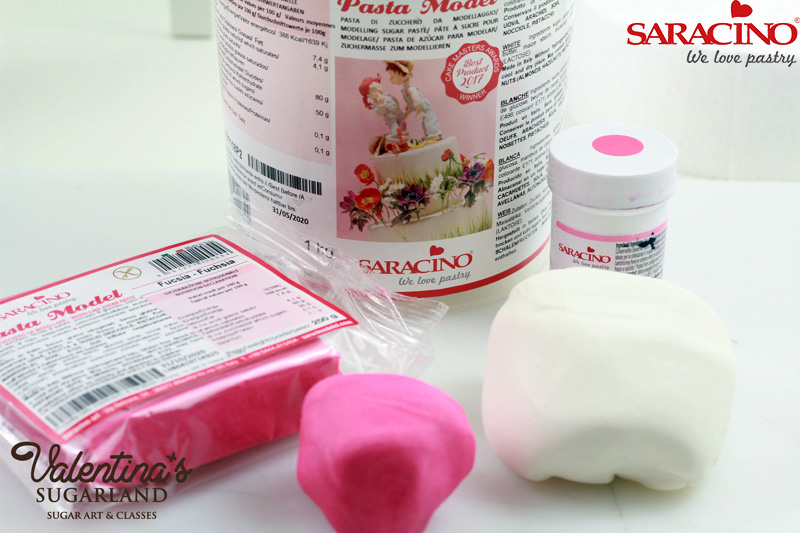
Step 1
Prepare the Saracino Modelling Paste required for the Hippo. I used 40g fuchsia and 60g white modelling paste mixed together to get the pink colour paste, take 2g from this colour and mix it with 10g white to achieve the brighter pink for details.
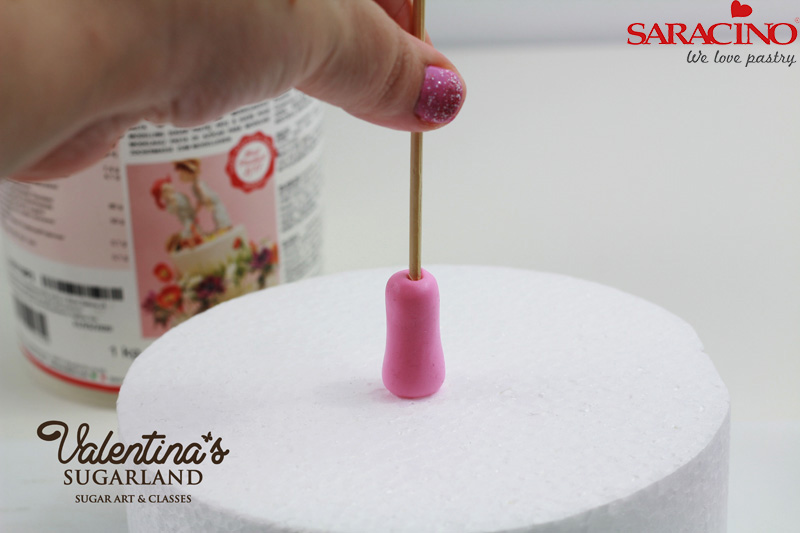
Step 2
You will need 5g pink paste for one leg. Knead the paste thoroughly until pliable. Form a ball and roll it between your hands to a 3cm long sausage. Pierce it with a wooden skewer from one end to the other. Place it on a cake dummy and push the skewer into the styrofoam to be able to hold the hippo upstanding.
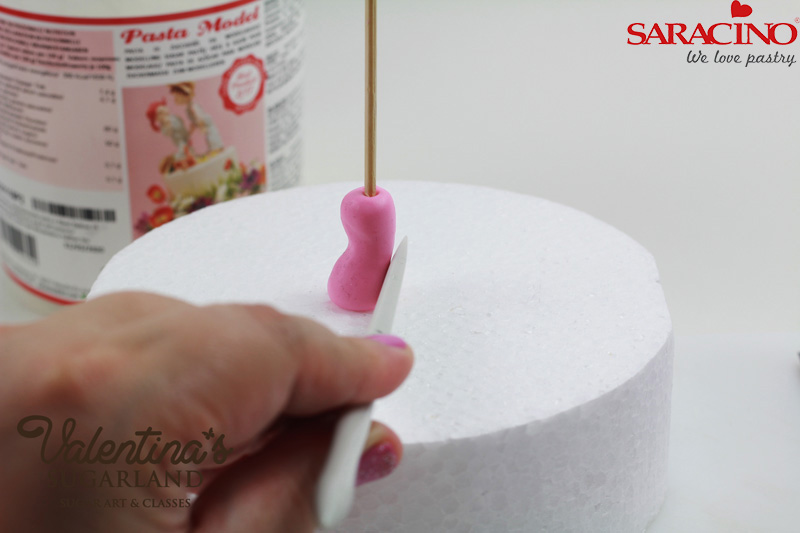
Step 3
Using a blade side of a modelling tool form the sausage as leg. Press with your finger or with a tool in the middle of the leg to get the hollow of the knee. On the front side press the front lower side of the leg backwards.
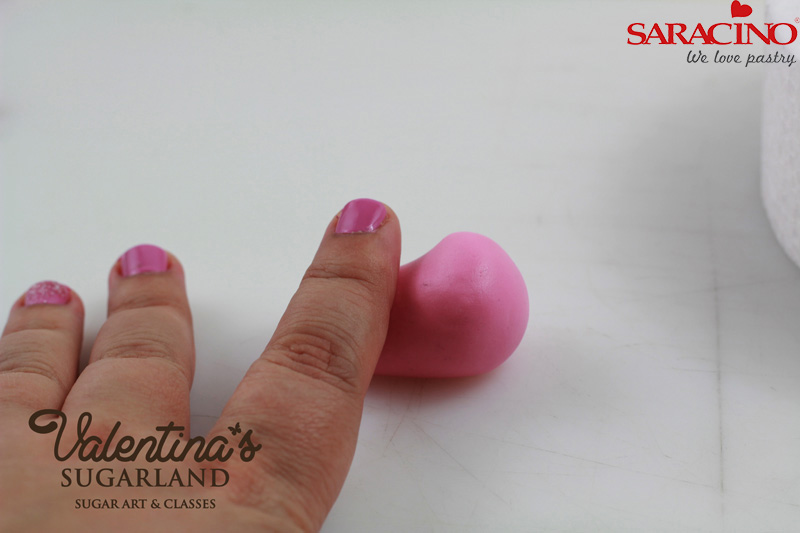
Step 4
Use 25g pink modelling paste and form it to a pear shape – make a ball and then roll one side of the ball few times between a modelling pad and your finger. The body should be about 5cm long.
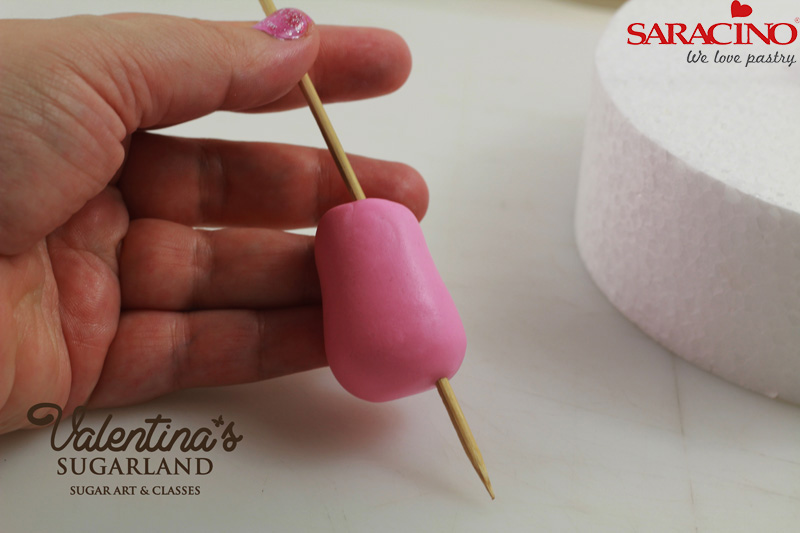
Step 5
Use a second skewer to pierce diagonally through the body and the tip should come out sidewise on the thicker end of the pear.
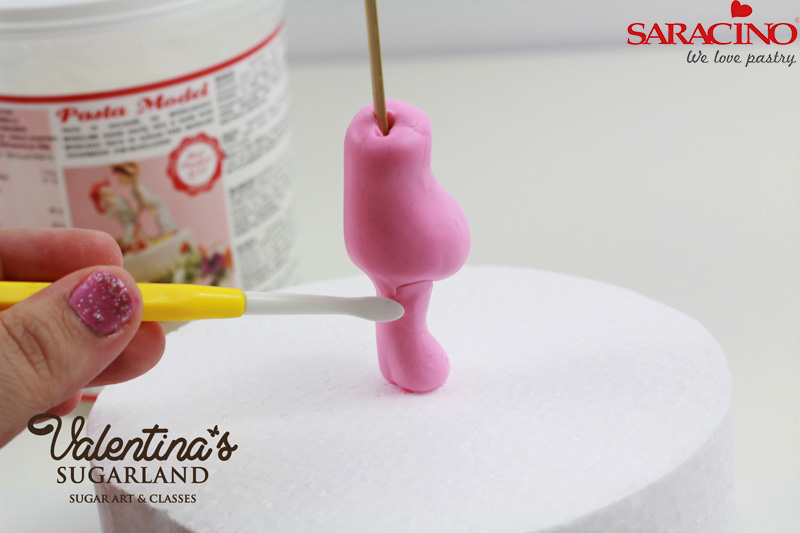
Step 6
Take out the skewer and place the body on the skewer attached to the leg and the cake dummy. Apply water on the joining seam between leg and body and using a Dresden tool or silicon brush smooth the seam.
Tip:I use only water to join and smooth two pieces of Saracino modelling paste together. You don’t need sugar glue or piping gel for that. Apply water and go a few times with your tool over the seam.
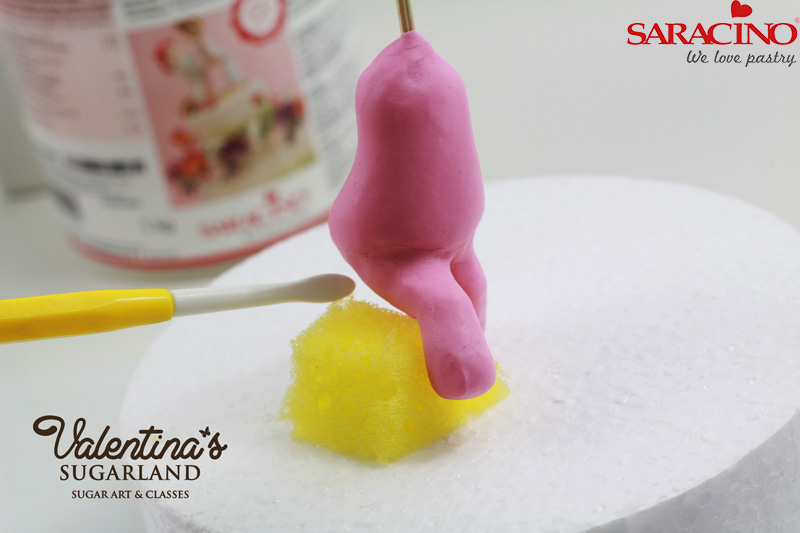
Step 7
For the second leg use 5g paste and roll it to a sausage 3cm long. Roll in the middle between two fingers to thin it for the knee area and attach with water to the body. Use piece of sponge to support the leg while working on it and until it dries and can hold itself in the air.
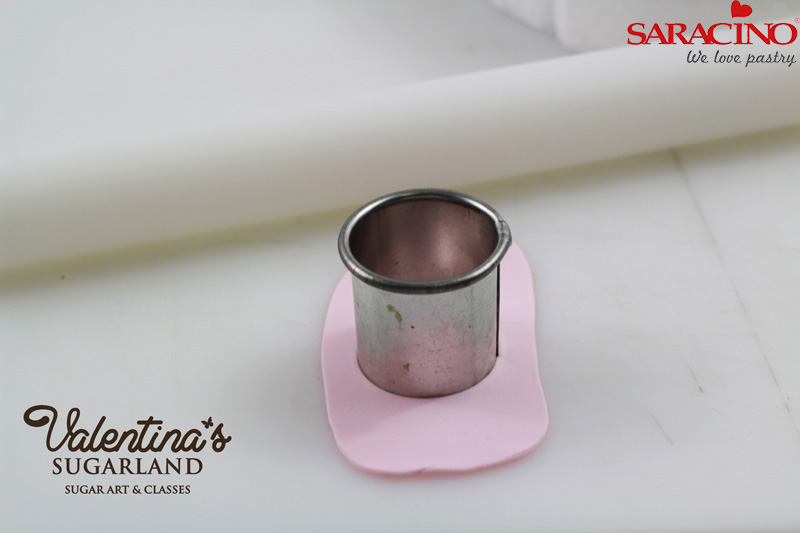
Step 8
Roll out thin bright pink paste and cut a circle with a 3cm cutter
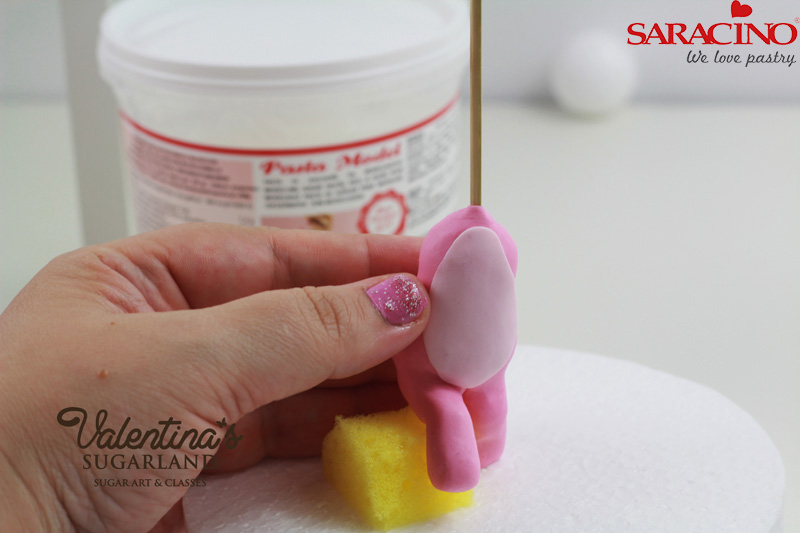
Step 9
Strech it between your fingers to get an oval shape and place it over the hippo belly. Use water on the back side so its sticks to the body.
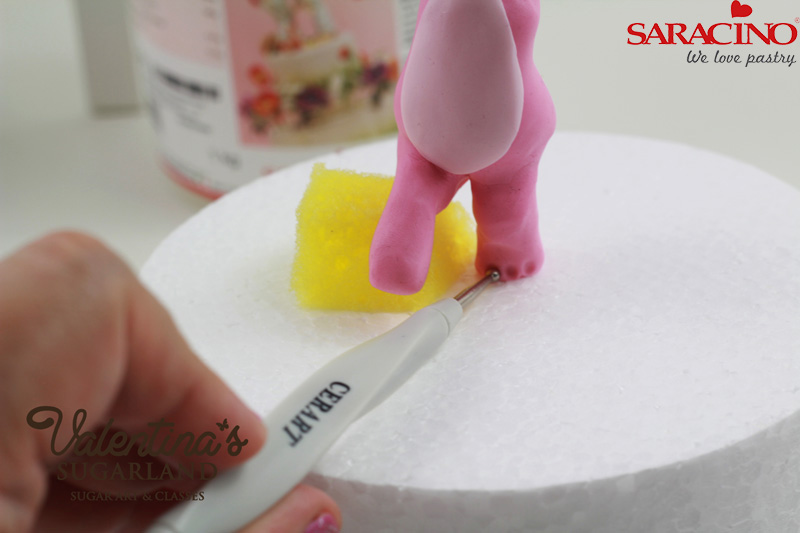
Step 10
Use a small ball tool to indent three holes on the toes of both feet.
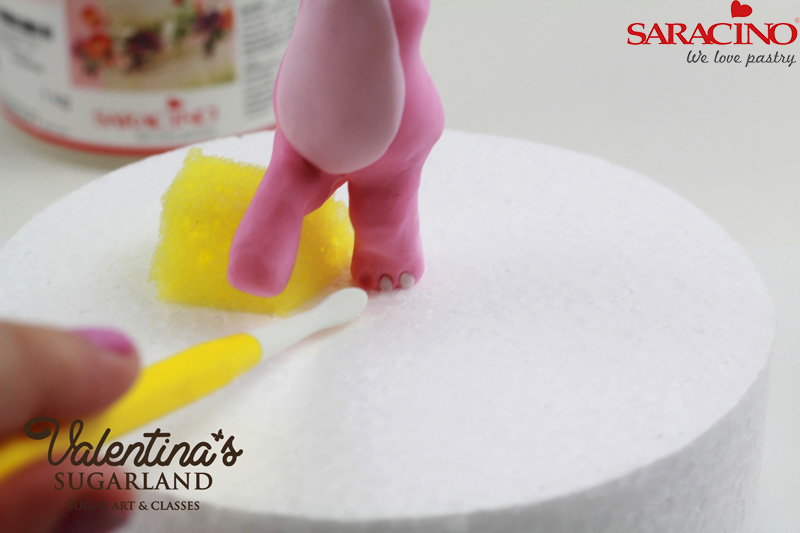
Step 11
Fill the holes with small balls of white modelling paste and press them flat with your finger or a tool.
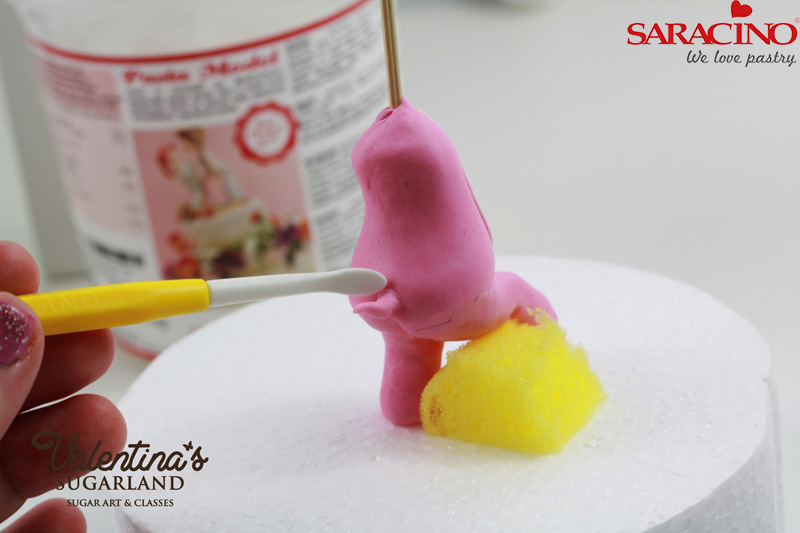
Step 12
Form a small pointy sausage and place it on the back for a tail. Smooth with the Dresden tool.
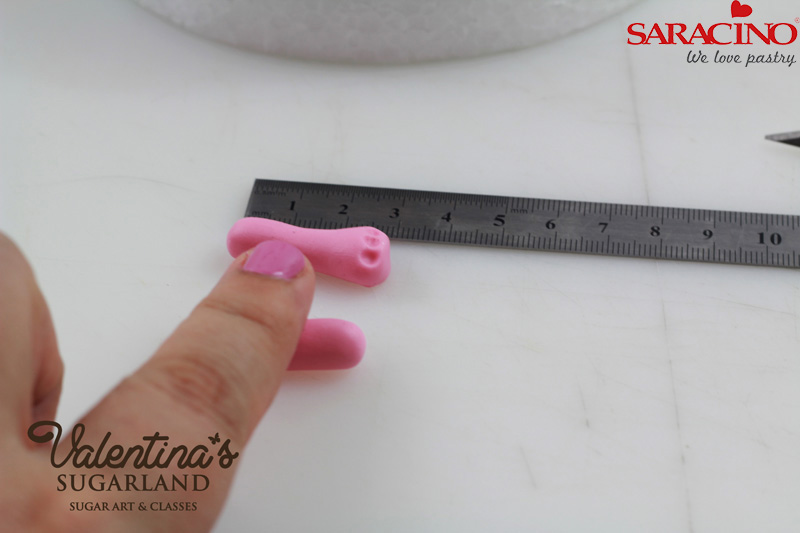
Step 13
For each of the arms knead well and shape 2.5g Saracino Modelling Paste into a 3cm long sausage. Indent on each hand three holes for the finger nails and put in each hole a small ball of white modelling paste.
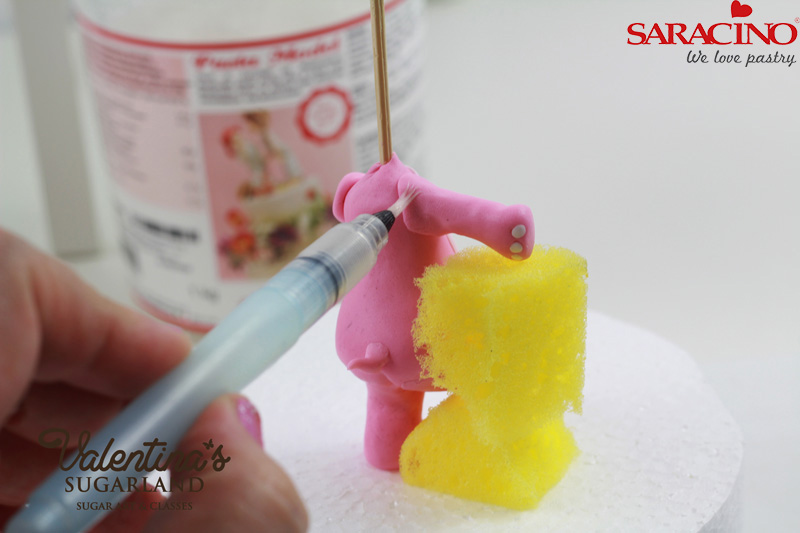
Step 14
Attach the arms to the body. One arm is streched out to the side, one is bent and is resting on the belly. Use water to blend the seams. Support the arm with a piece of sponge and leave the body over night to dry.
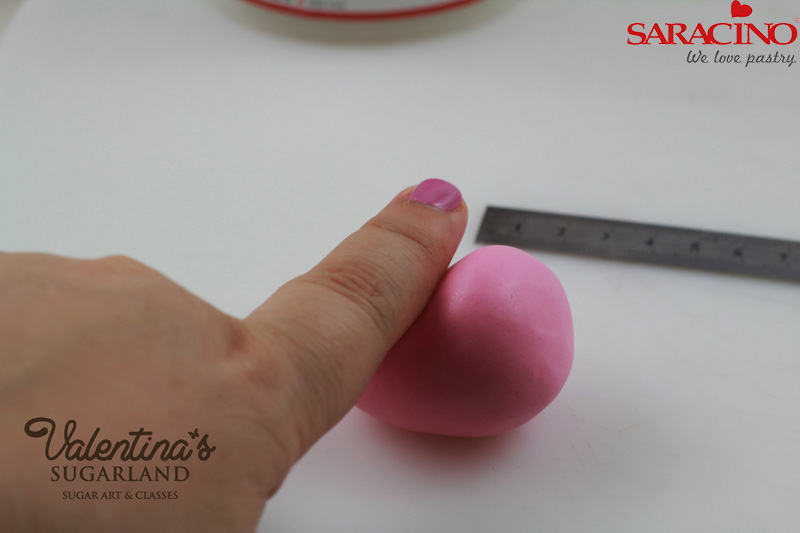
Step 15
For the head you will need 40g pink Saracino modelling paste. Knead well and form a ball. Roll the ball on the modelling pad with one finger on one side and thin this area a bit. The head should be about 5cm long.
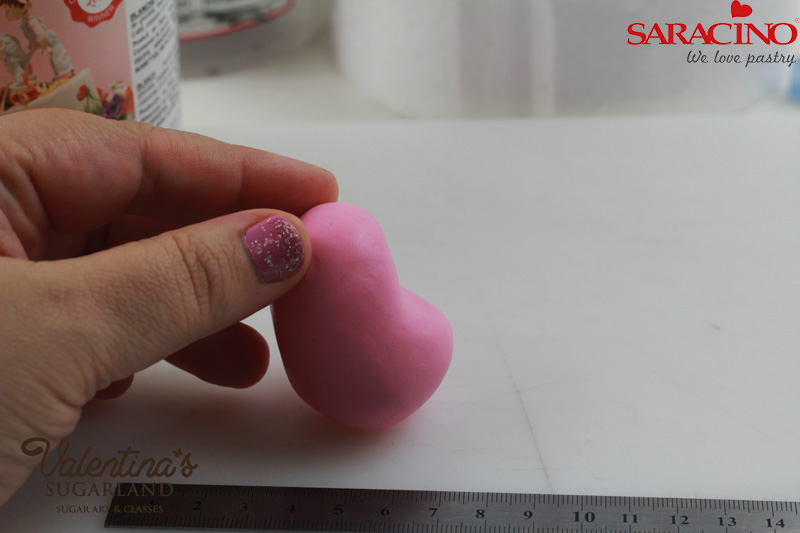
Step 16
From the side it should look like this.

Step 17
Using a ball tool or a CelPin make two dents for the eyes in the middle of the head length.
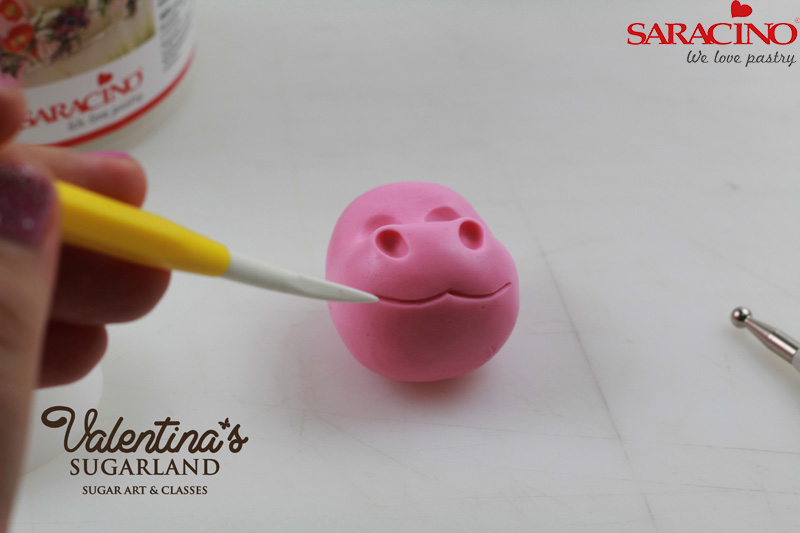
Step 18
Using a smaller ball tool make the nostrils. With the smaller side of the Dresden Tool draw the lines of the mouth. Impress two smaller holes on both sides of the mouth line.
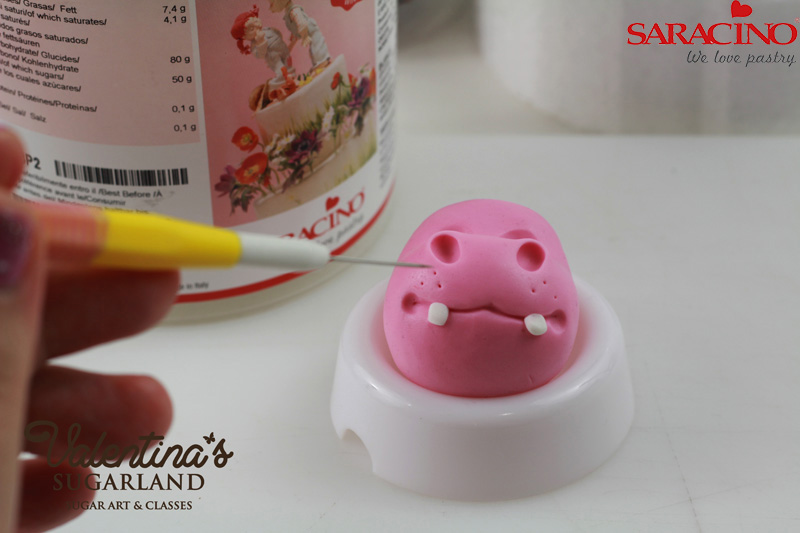
Step 19
Form two teeth out of white modelling paste and place them on the mouth line. With the needle tool make a few holes on both sides underneath the nostrils.
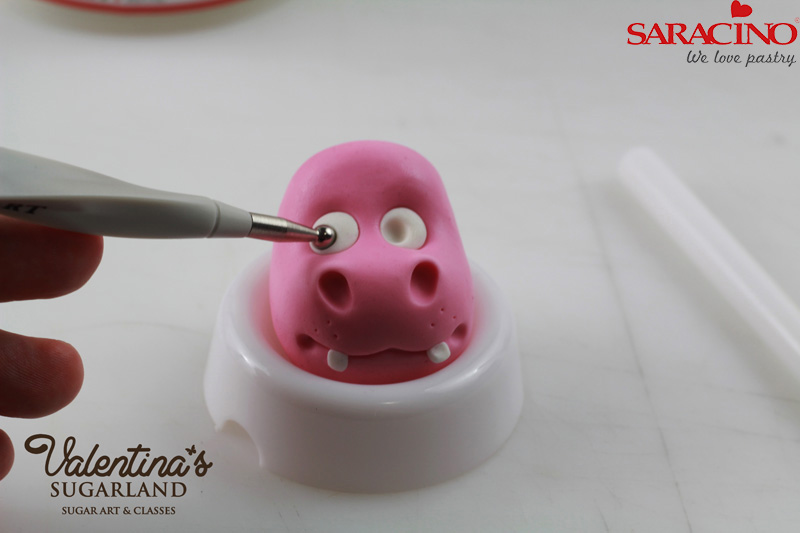
Step 20
Fill the eye dents with small white balls and press them flat with your finger tips. Make holes in the white balls using small ball tool. Important here is to pay attention where you put these holes. It depends in which direction your hippo is going to look.
Tip: I am using small plastic or styrofoam cups that are usually used to dry sugar flowers in them so the head is not becoming flat on the back while I am working on it or while it is drying.
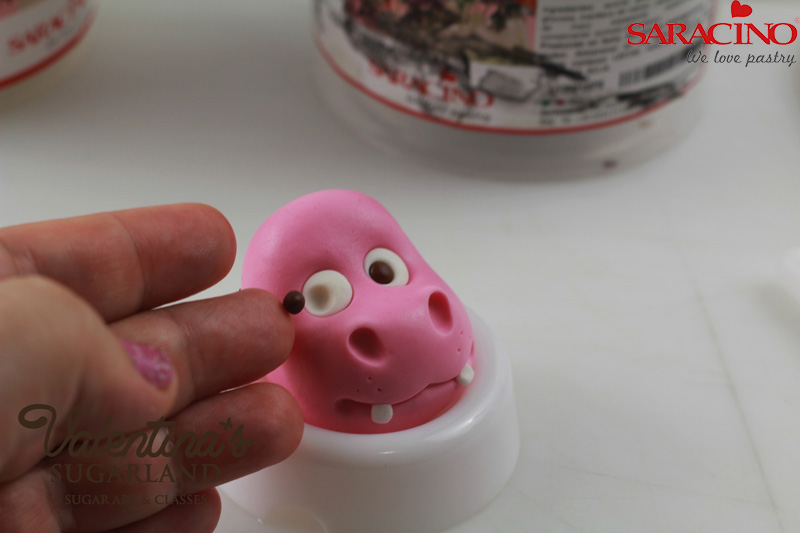
Step 21
Put small brown ball of Saracino modelling paste into the holes. Press with your finger over it.
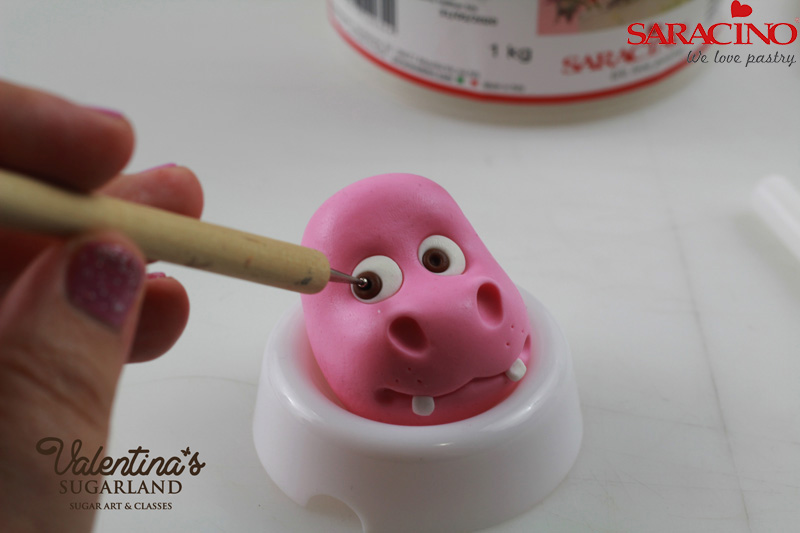
Step 22
Makes holes in the middle of the brown circle with smaller ball tool.
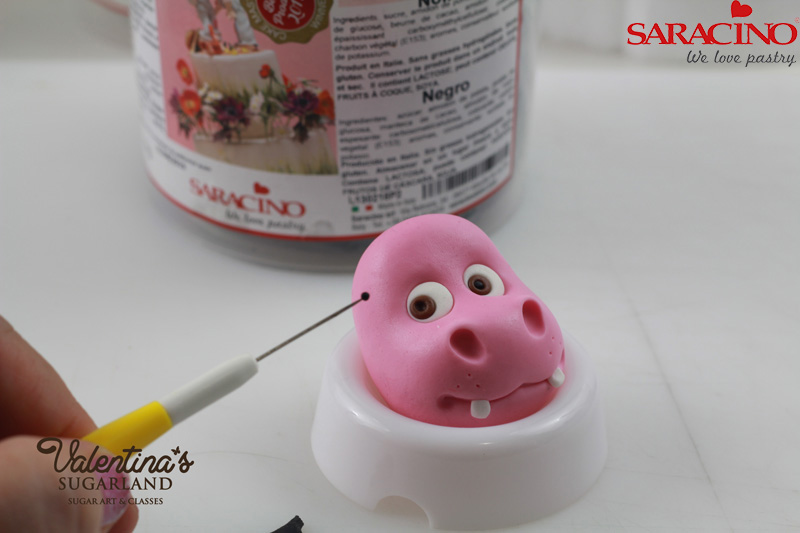
Step 23
Make tiny black balls and put them in the middle of the brown circle.
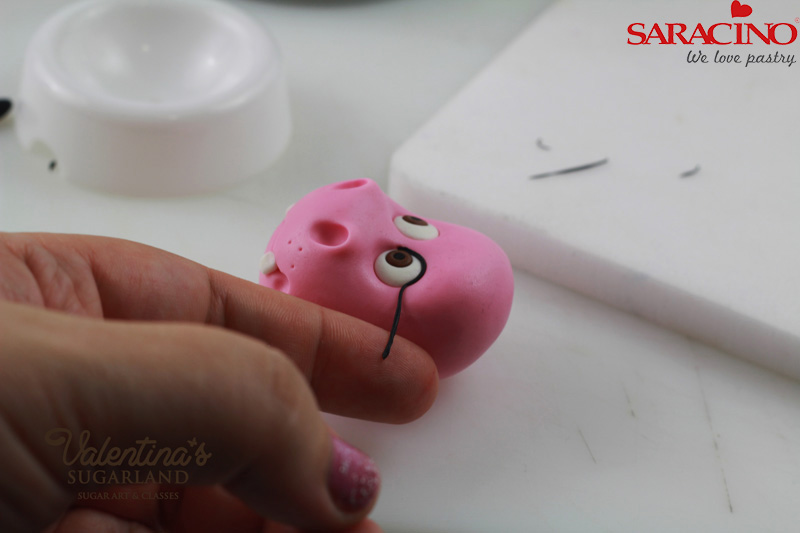
Step 24
Roll small amount black modelling paste into a very thin strand and put it as eye liner on the upper eye lid. Use little water to make it stick.
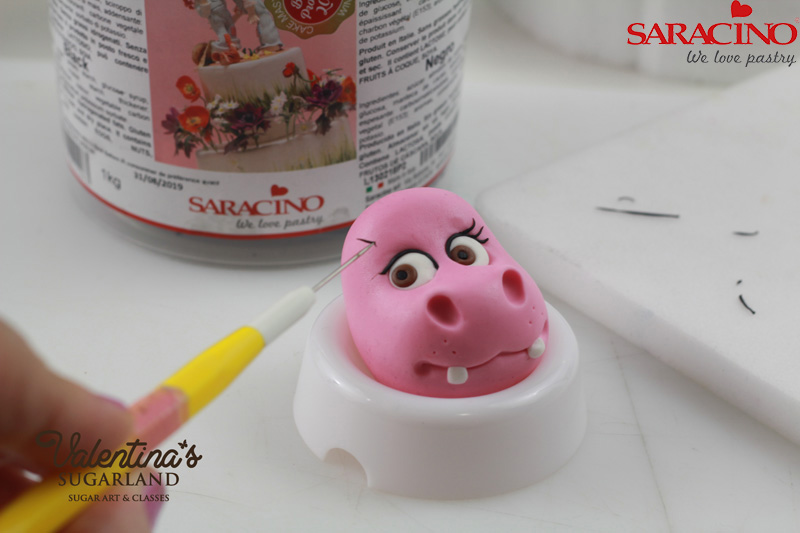
Step 25
If you like put 2-3 tiny pointy strands for eye lashes.
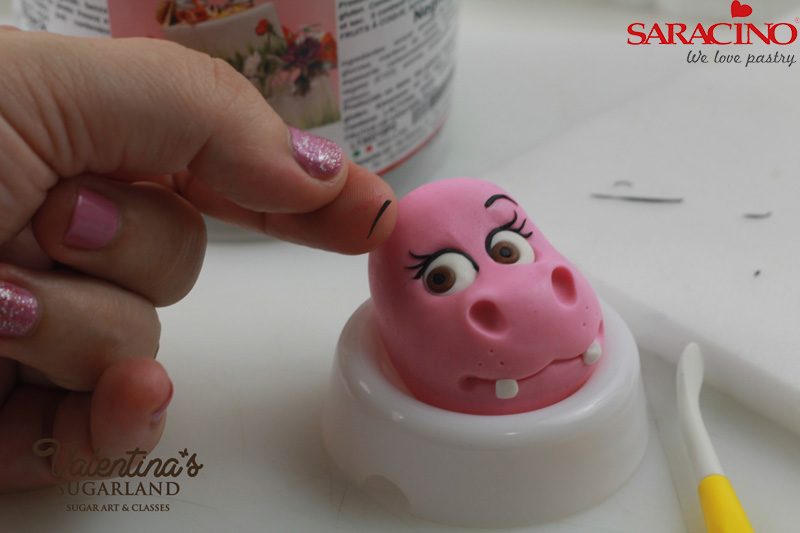
Step 26
Put two black strands for eyebrows.
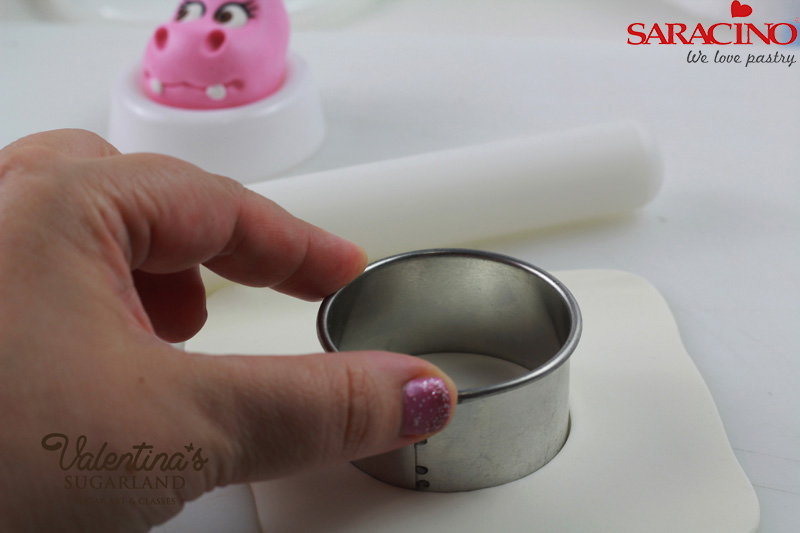
Step 27
Roll out white modelling paste and cut a 5.5cm circle.
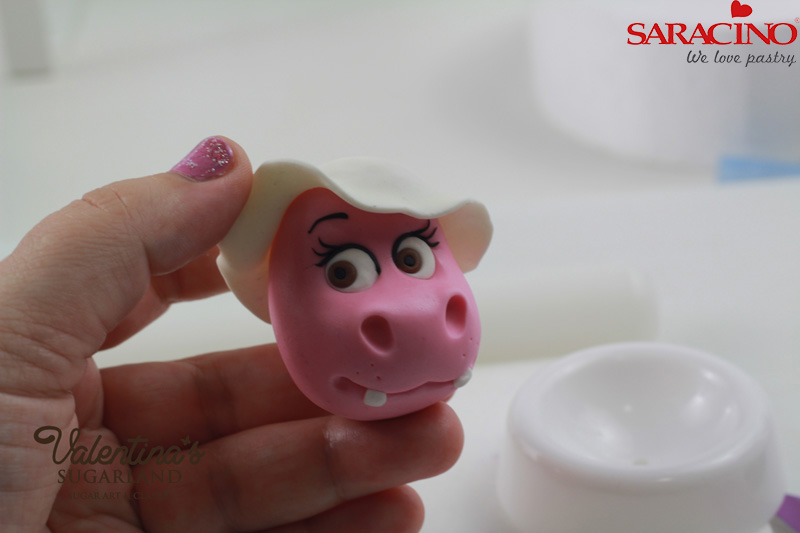
Step 28
Place it on the head as hat and curl one side upwards so it looks like a textile summer hat.
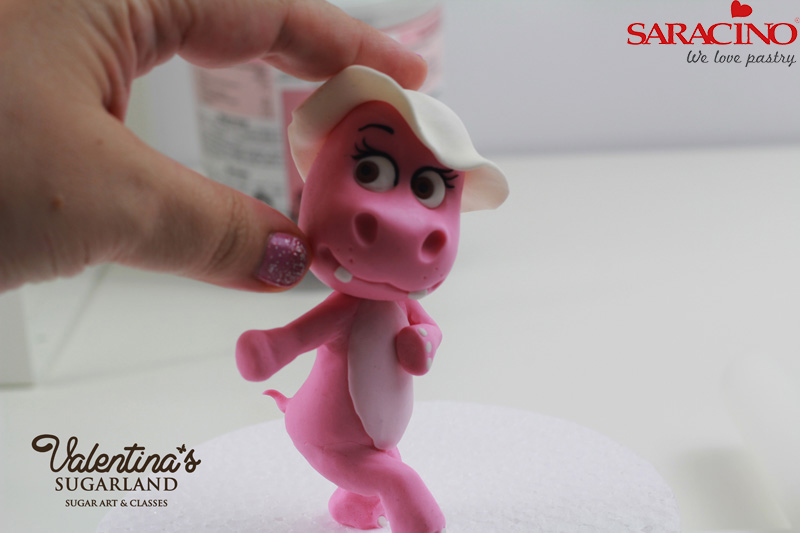
Step 29
Cut the wooden skewer so it projects about 2-3 cm above the shoulders. Apply cake gel or piping gel in the middle of the shoulders and put the head on the shoulders using the wooden skewer as support.

Step 30
For the ears make two teardrops out of pink modelling paste and a much smaller teardrops out of the bright pink paste. Place the smaller drops on to the bigger one and press them together.
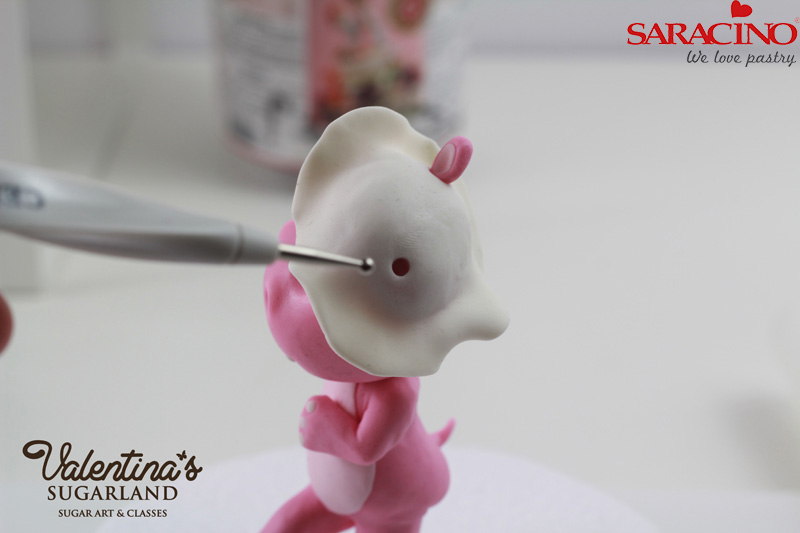
Step 31
Make two holes into the head and insert the pointier end of the ears into them.
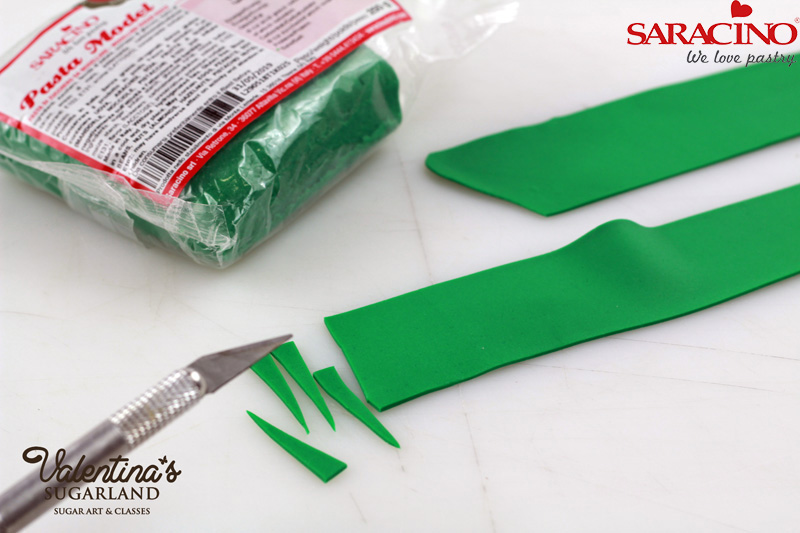
Step 32
Roll out thin green Saracino modelling paste and cut with little sharp triangles with a craft knife.
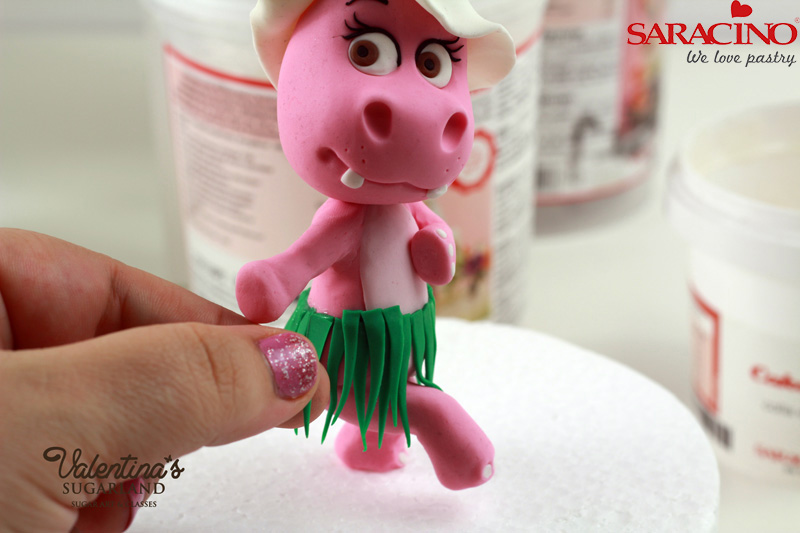
Step 33
Apply Saracino cake gel on the waist and place the triangles around the waist. I put them in three layers.
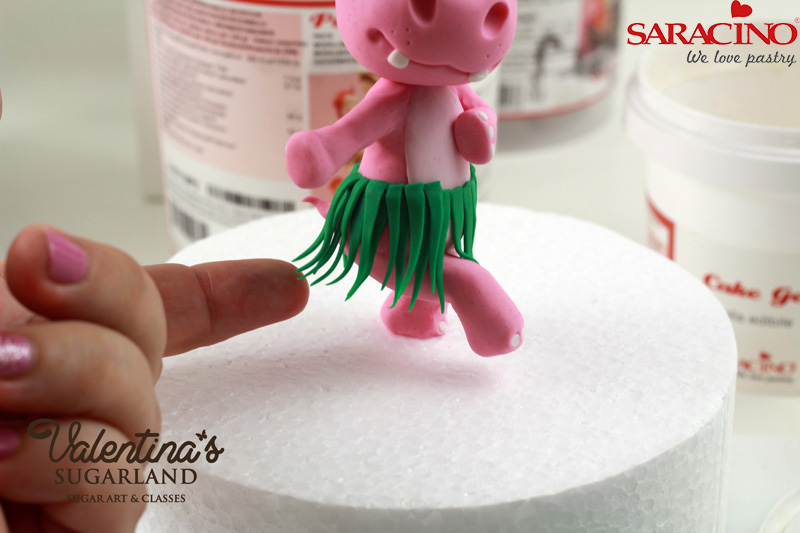
Step 34
You can curve the tips of the triangles on one side so it seems as they move with the Hippo’s “dancing” moves.
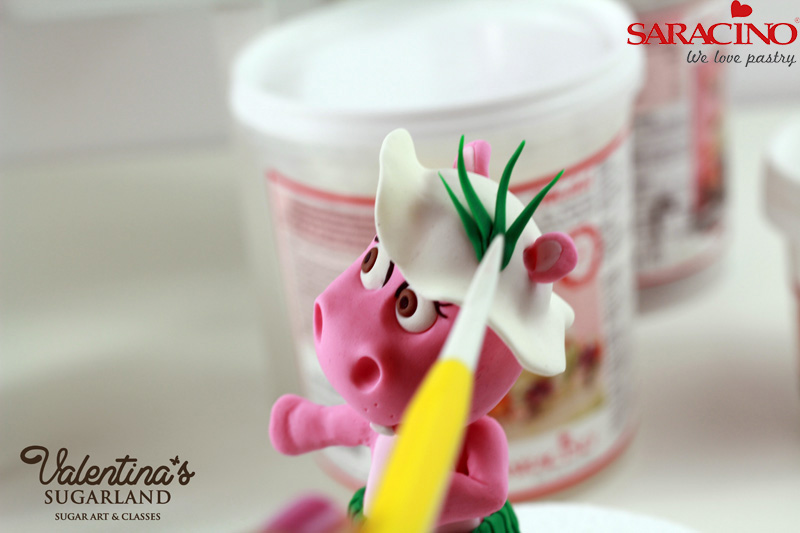
Step 35
Use few triangles as hat decoration.

Step 36
Cut small flowers out of white and yellow Saracino modelling paste and decorate the hat and the neck of the hippo.
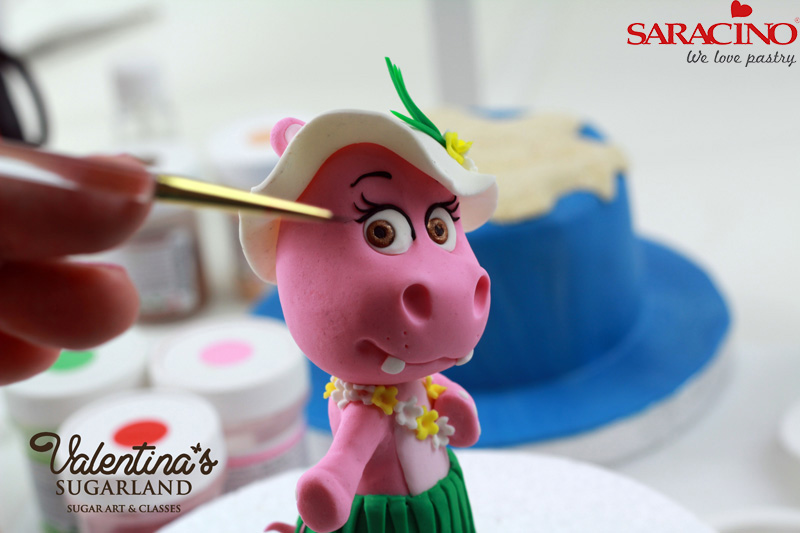
Step 37
Mix Saracino bronze powder with lemon extract or alcohol and paint the brown of the eyes with the mixture. Mix white Saracino powder with lemon extract and put one white spot into each eye.
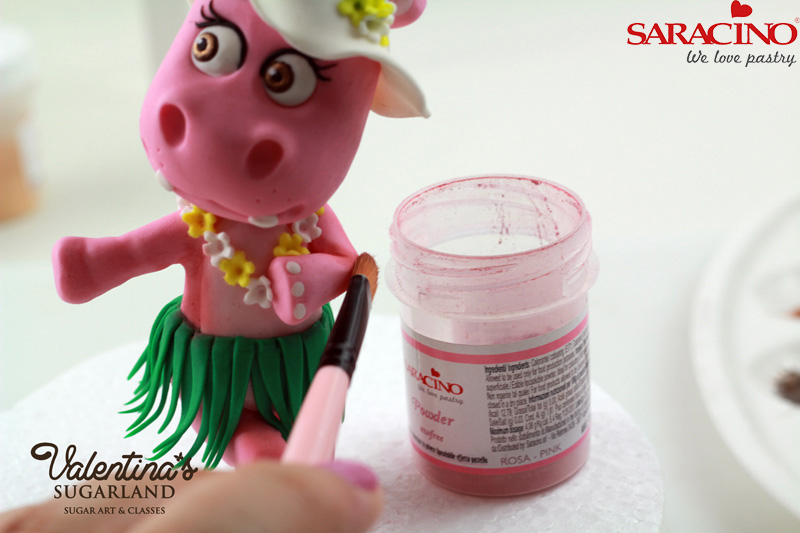
Step 38
Use pink Saracino powder and a soft brush to add shadows on the elbows, on the cheeks, on the knees and on the nostrils.
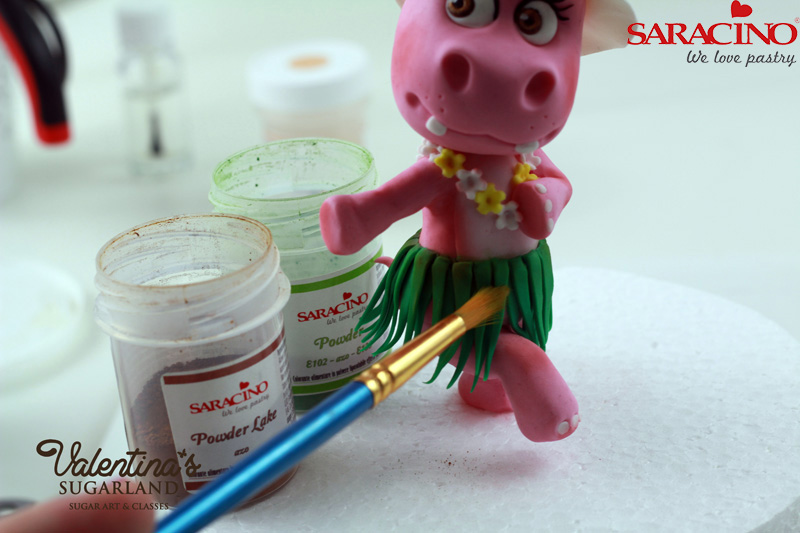
Step 39
Add shadows on the skirt with brown and green Saracino dust powder
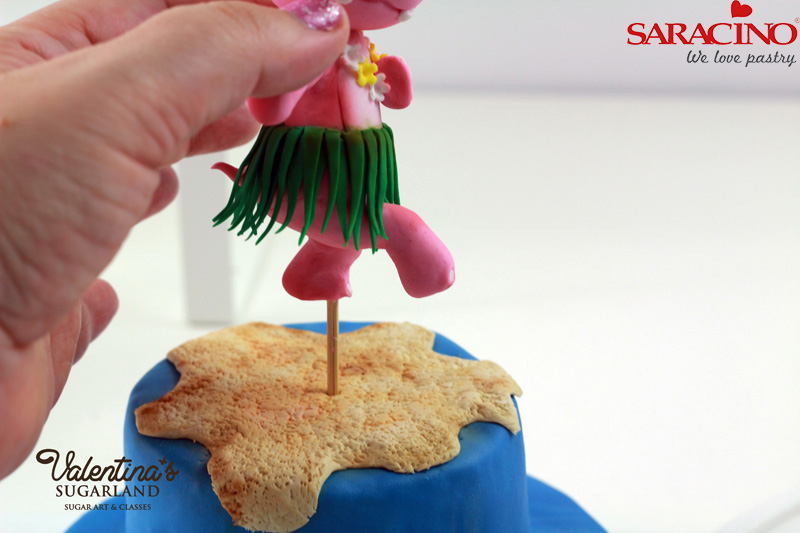
Step 40
Leave the Hippo to dry for at least 2-3 days before using it on a cake.





